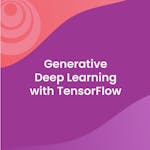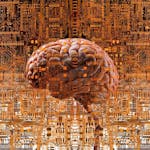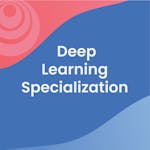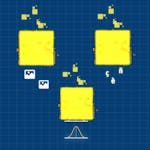Deep Learning Definitions: A to Z Glossary Terms
Interested in deep learning but you keep seeing terms unfamiliar to you? This A-to-Z glossary defines key deep learning terms you need to know.
Deep learning professionals are deeply immersed in the development, deployment, and maintenance of advanced artificial intelligence models using deep learning frameworks. They leverage various programming languages, frameworks, and libraries to build applications that can automatically learn from data, extract complex patterns, and make accurate predictions. With a strong focus on testing and collaboration, deep learning experts play a pivotal role in revolutionizing AI technology and creating intelligent systems that solve intricate problems across diverse domains.
This deep learning glossary can be helpful if you want to get familiar with basic terms and advance your understanding of deep learning.
Deep Learning Definitions: A to Z Glossary Terms
Interested in deep learning but you keep seeing terms unfamiliar to you? This A-to-Z glossary defines key deep learning terms you need to know.
Deep learning professionals are deeply immersed in the development, deployment, and maintenance of advanced artificial intelligence models using deep learning frameworks. They leverage various programming languages, frameworks, and libraries to build applications that can automatically learn from data, extract complex patterns, and make accurate predictions. With a strong focus on testing and collaboration, deep learning experts play a pivotal role in revolutionizing AI technology and creating intelligent systems that solve intricate problems across diverse domains.
This deep learning glossary can be helpful if you want to get familiar with basic terms and advance your understanding of deep learning.
Deep Learning Terms
Activation Function
An activation function is a mathematical function applied to the output of a neuron in a deep-learning model. It introduces non-linearity, allowing the network to learn complex patterns and make accurate predictions.
Backpropagation
Backpropagation is a training algorithm used in deep learning to adjust the model's weights based on the calculated error between predicted and actual output. It helps the model learn from its mistakes and improve over time.
Convolutional Neural Network (CNN)
A Convolutional Neural Network is a type of deep learning model designed explicitly for image recognition and processing. It uses convolutional layers to detect patterns and features in images automatically.
Deep Learning
Deep learning is a subset of machine learning that uses neural networks with multiple layers (deep architectures) to learn from data and make predictions. It has shown remarkable success in various tasks, including image recognition, natural language processing, and speech recognition.
Epoch
In deep learning, an epoch refers to a complete pass through the entire training data set during model training. Multiple epochs are usually required to optimize the model's performance.
Feedforward Neural Network
A feedforward neural network is the simplest form of deep learning model, where data flows in one direction from input to output without any feedback loops.
Gradient Descent
Gradient descent is an optimization algorithm used in deep learning to minimize the model's loss function by adjusting the weights toward the steepest descent.
Hyperparameter
Hyperparameters are parameters set before the training of a deep learning model, such as learning rate, number of hidden layers, and batch size. Tuning hyperparameters is crucial for optimizing model performance.
Image Recognition
Image recognition is a deep learning application that identifies and classifies objects or patterns within images.
Jupyter Notebook
Jupyter Notebook is an interactive computing environment commonly used for deep learning experimentation, data analysis, and visualization.
Keras
Keras is an open-source deep learning library written in Python. It provides a high-level API for building and training neural networks, making deep learning more accessible to beginners.
LSTM (Long Short-Term Memory)
LSTM is a type of recurrent neural network (RNN) designed to process data sequences, making it suitable for tasks involving time-series data or natural language processing.
Mini-Batch Gradient Descent
Mini-batch gradient descent is a variation of gradient descent where the model's parameters are updated using a subset (mini-batch) of the training data instead of the entire data set. It balances efficiency and convergence speed.
Neural Network
A neural network is the fundamental building block of deep learning models. It consists of interconnected neurons organized into layers to process and transform data.
Overfitting
Overfitting occurs when a deep learning model performs well on the training data but fails to generalize to new, unseen data. It is essential to avoid overfitting by regularization techniques or more data.
Pooling Layer
Pooling layers in a deep learning model reduce the spatial dimensions of the input data, reducing computational complexity and helping the model focus on important features.
Quantum Machine Learning
Quantum machine learning combines principles from quantum mechanics and machine learning to develop algorithms that can be executed on quantum computers.
ReLU (Rectified Linear Unit)
ReLU is an activation function widely used in deep learning due to its simplicity and efficiency. It introduces non-linearity by setting all negative values to zero.
Stochastic Gradient Descent (SGD)
Stochastic gradient descent is a variant of gradient descent where the model's parameters are updated after processing each data point. It is computationally efficient but can be noisy.
Transfer Learning
Transfer learning is a technique where a pre-trained deep learning model is used as a starting point for a new task, leveraging the knowledge gained from previous tasks to improve performance on a new task.
Underfitting
Underfitting occurs when a deep learning model fails to capture the underlying patterns in the data. It can be addressed by increasing model complexity or gathering more data.
Variational Autoencoder (VAE)
VAE is a generative deep learning model that learns to encode data into a latent space and decode it back to generate new data samples.
Weight Initialization
Weight initialization is setting the initial values of the model's weights. Proper weight initialization is crucial for efficient model training and convergence.
Xavier/Glorot Initialization
Xavier (Glorot) initialization is a popular weight initialization technique that sets the initial weights using a specific distribution to help stabilize training and prevent vanishing or exploding gradients.
Conclusion
Congratulations on completing the A-to-Z glossary of Deep Learning terms! With this glossary, you have gained insights into the foundational concepts and techniques in deep learning. Whether a beginner or an experienced practitioner, this glossary will be a valuable resource to enhance your understanding and proficiency in deep learning. Embrace the power of deep learning and unlock its potential to revolutionize various industries and domains. Happy learning and exploring the world of deep learning!
Learn in-demand deep learning skills from industry leaders.
Statistics Courses | Machine Learning Courses | Data Visualization Courses | Computer Vision Courses | NLP Courses | Pytorch Courses | R Courses | TensorFlow Courses | Reinforcement Learning Courses | Open CV Courses | Neural Networks Courses | Convolutional Neural Network Courses
 Join a community of over 100 million learners from around the world
Join a community of over 100 million learners from around the world Learn from more than 200 leading universities and industry educators.
Learn from more than 200 leading universities and industry educators. 70% of all learners who have stated a career goal and completed a course report outcomes such as gaining confidence, improving work performance, or selecting a new career path.
70% of all learners who have stated a career goal and completed a course report outcomes such as gaining confidence, improving work performance, or selecting a new career path.- 100% online
- Flexible schedule
- Mobile learning
- Videos and readings from professors at world-renowned universities and industry leaders
- Practice quizzes
Can’t decide what is right for you?
Try the full learning experience for most courses free for 7 days.Register to learn with Coursera’s community of 87 million learners around the world




